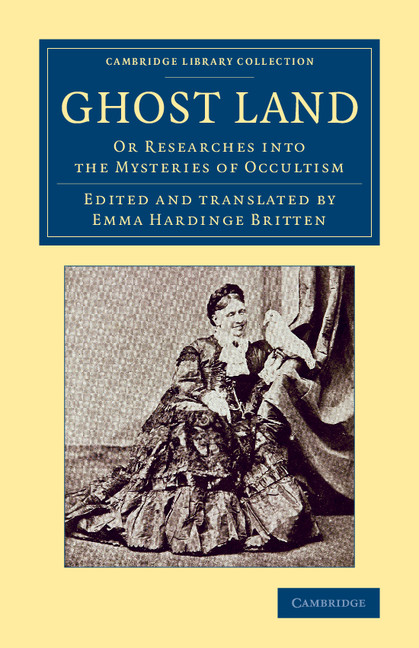This way to the weird, wonderful and refreshingly unconventional world of Warburg


A mysterious cosmic emblem hangs over the entrance to a building in Bloomsbury, at the heart of London’s university quarter. Depicting concentric circles bound by intertwined arcs, it represents the four elements, seasons and temperaments, as mapped out by Isidore of Seville, a sixth-century bishop and scholar of the ancient world, as well as patron saint of the internet. What lies within is not a masonic lodge, though, or the HQ of the Magic Circle, but the home of one of most important and unusual collections of visual, scientific and occult material in the world. (The Guardian, 25/09/24)
The Warburg Institute, a research institution associated with the University of London and member of the School of Advanced Study, concentrates on cultural history, role of images, the histories of art and science and their particular links with magic, superstition, and popular supernatural lore.
Just the ticket for a Paranormal Daily News reader.
From the Warburg Institute website:
‘Founded in Hamburg at the turn of the twentieth century by historian Aby Warburg (1866-1929), the Institute was established to trace the roots of the Renaissance in ancient civilisations and ended up changing the way we see the world around us.
Sent into exile when the Nazis came to power, the Institute was transferred to England in 1933 and became part of the University of London in 1944. It has served, during a turbulent century, as a creative crucible for scholars, curators, artists and all those whose work sits outside traditional academic structures. The Warburg’s unique Library, Archive and Photographic Collection form a holistic, associative engine for exploring the histories of the arts and sciences—linking the textual and the visual, the intellectual and the social, the scientific and the magical.
Building on Aby Warburg’s belief that the memory of the past activates the present, the Warburg examines the movement of culture across barriers - of time, space and discipline -to inspire, inform and connect.’
In 2022, major renovation and redevelopment began on the existing buildings, dubbed the ‘Warburg Renaissance’. £14.5 million later, the new, improved Warburg reopens in early October 2024.
“It’s a building filled with literal magic,” according to novelist Naomi Alderman (The Power), who has spent long hours writing at the library. “A place to sit amid books that are almost definitely emanating auras of sorcery … One brief stroll through the shelves and I always find some new wyrd inspiration.” (Guardian)
So, if you’re in London this Fall, you have no reason not to pop in and take a peek at the esoteric world of the Warburg Institute. Their website states that the unique collections of the Warburg Library and Photographic Collection are open free of charge to academic researchers. They hope to have all their collections back in the building by mid-October.
The re-opening is particularly timely, considering recent weeks have seen the release of Disney+s Agatha All Along, a Marvel spin-off that concerns the Darkhold, also known as the Book of Sins, the Book of Spells, or the Book of the Damned, with spells containing transcribed dark magic based on ancient engravings carved by the demonic entity known Chthon. A powerful grimoire full of Eldritch magic.
Mystical literature in movies
Fictional books of mystic power/knowledge also feature in Beetlejuice (Handbook for the Recently Deceased), Bedknobs and Broomsticks, (The Spells of Astoroth), The Ninth Gate (The Nine Gates of the Kingdom of Shadows), Supernatural ( The Book of the Damned ), and the Evil Dead series of movies (The Necronomicon/Book of Souls). Not forgetting Harry Potter (Book of Spells), although personally I’d like to. A spell of forgetfulness, perhaps? à la Doctor Strange’s in Spider-Man: No Way Home (2021).

'Real life' tomes
And of course there are many 'real life' tomes that dabble in the occult, including The Grand Grimoire (1521, 1522 or 1421), Book of Shadows (Wicca, 1940s/50s), Sworn Book of Honorius (1347), Calendarium Naturale Magicum Perpetuum (1619), Grand Albert (1493), Petit Albert (1706), Galdrabók (1600), The Magus (1801), de magia veterum (1575), Picatrix (1th century), Pseudomonarchia Daemonum (1577?), Magical Treatise of Solomon (15th century), and of course the Kabbalah (dates unknown, but first widely publicized in the Middle Ages), as well as many, many others.
These should all be examined with the appropriate caution.

Aleister Crowley's The Book of the Law (1904): ‘Do what thou wilt shall be the whole of the Law’ forms the basis for Crowley's practice of Magick and his Thelema ‘religion’. He used to hang out at (in the basement) - The Atlantis Bookshop, still trading in Museum Street, which I covered in a previous post.
My own, purely academic activities in the area were confined to a thesis at the University of Hull, many years ago.

Other than the Warburg, what other institutions house similar fare?
The Senate House, London: The Harry Price Library of Magical Literature

The Cornell University Witchcraft Collection

The University of Illinois Library's collection of occult materials

University of Manchester -Magic, Monsters and Macabre

Cambridge Library Collection - Spiritualism and Esoteric Knowledge

And, no doubt, there are quite a few more to peruse.
Some movies to enjoy whilst contemplating the reading of books that explore the forbidden arts...
The Stuff of Nightmares: Nightmarish Visions at the Warburg
Stephen Arnell’s novel THE GREAT ONE, is available on Amazon Kindle now:





























.jpeg?auto=webp)